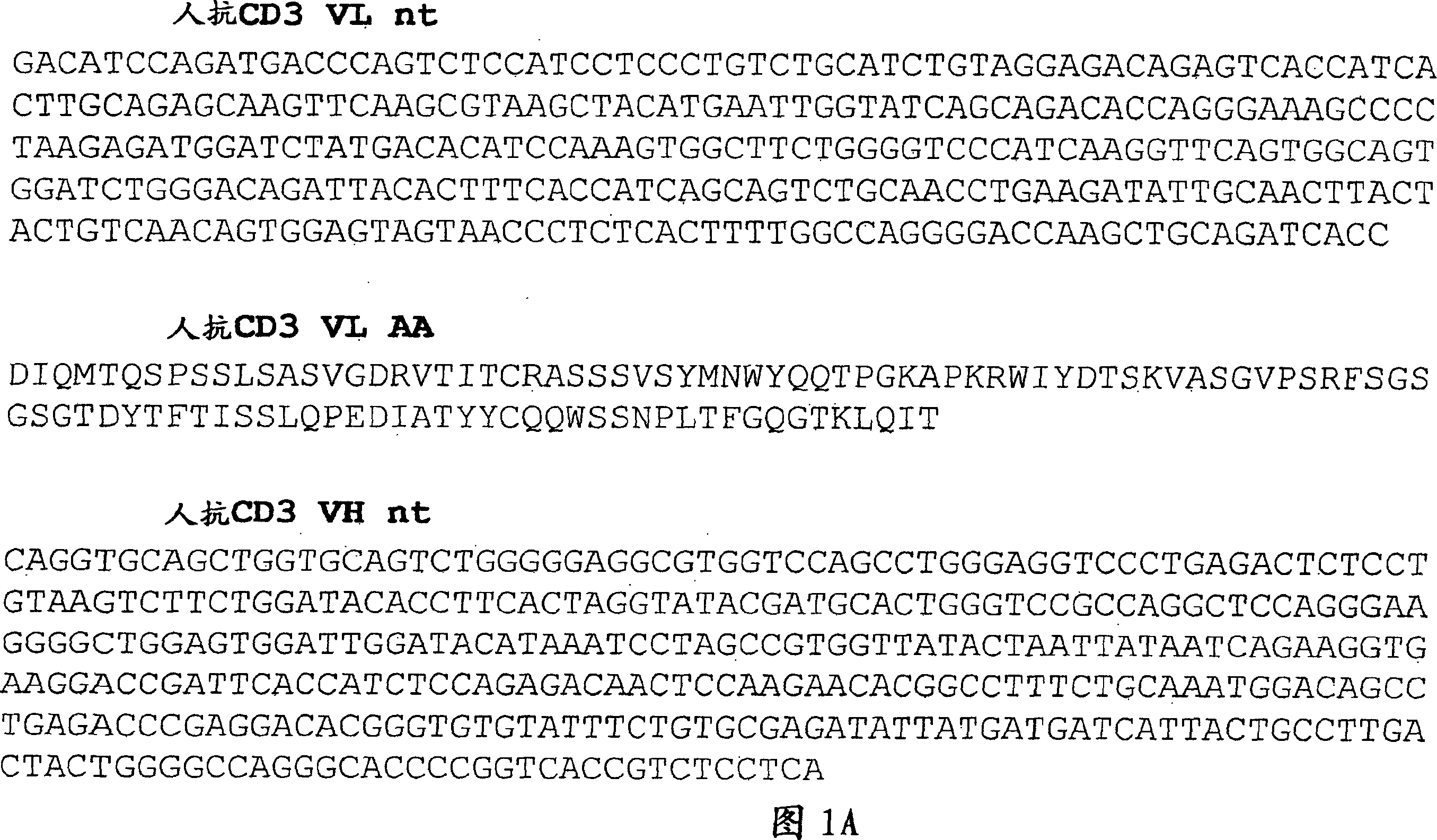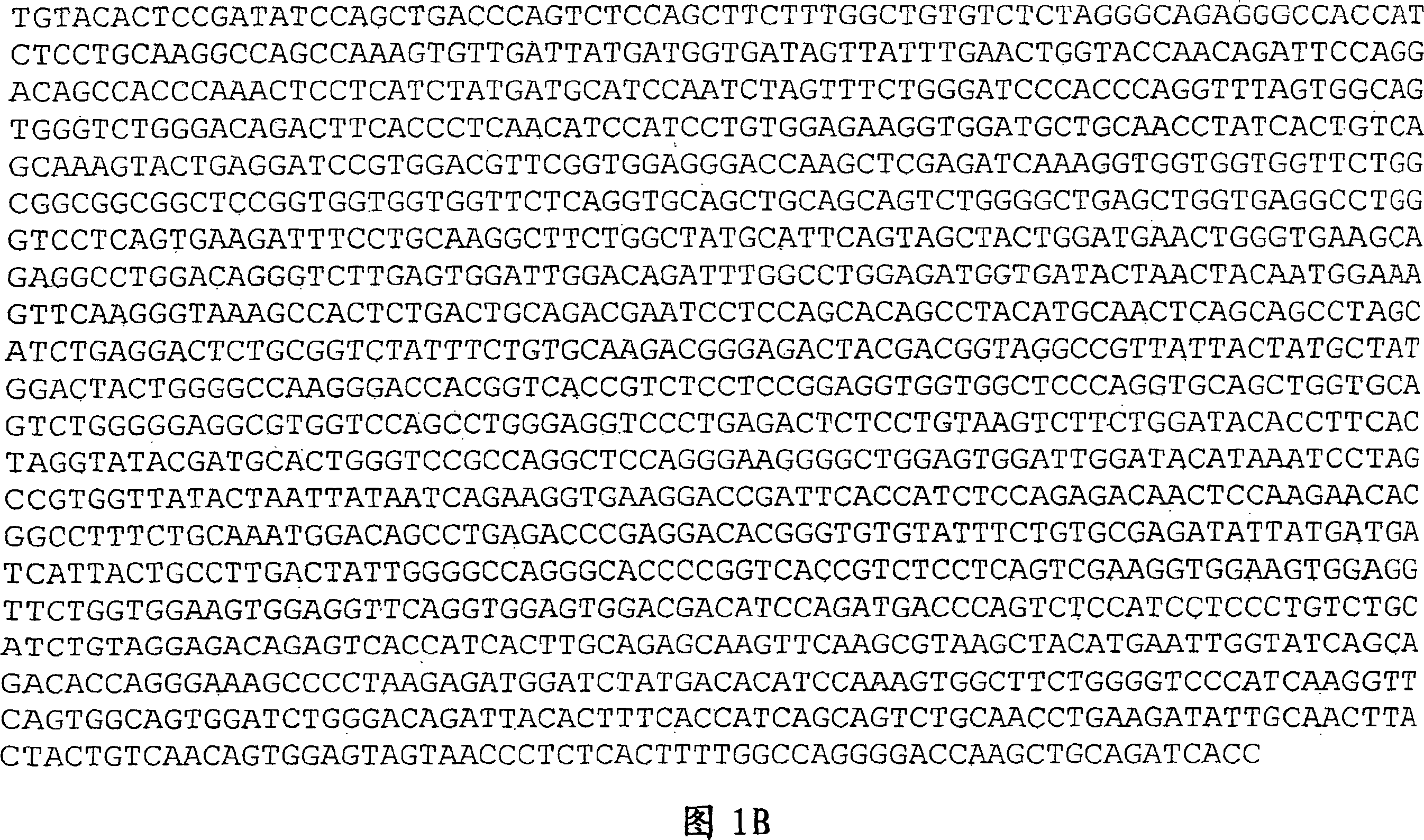Less immunogenic binding molecules
A technology that combines molecules and molecules, applied in the direction of immunoglobulins, hybrid immunoglobulins, and anti-animal/human immunoglobulins, and can solve problems such as reducing specific activity
- Summary
- Abstract
- Description
- Claims
- Application Information
AI Technical Summary
Problems solved by technology
Method used
Image
Examples
Embodiment 1
[0154] Generation of humanized antibodies specific to CD3 antigen
[0155] Refer to Kabat, EA, et al., "Sequences of Proteins of Immunological Interest", 5th Edition, Volume 3, Bethesda, MD: National Institutes of Health. National Center for Biotechnology Information, 1991; 2597. NIH Publication No. 91-3242 CD3 to determine CD3 specificity Location of the CDRs of the antibody OKT3.
[0156] The human framework regions chosen to accept the grafted CDRs were the KOL for the heavy chain and the REI for the light chain, respectively. The structures of these proteins have been solved by crystallography (REI: Palm (1975) Hoppe Seylers Z Physiol Chem 356, 167-191, KOL: Schmidt (1983) Hoppe Seylers Z Physiol Chem 364, 713-747.).
[0157] According to Adair 1994 Hum. Antibod. Hybridomas, 5:41-48, a number of additional murine residues were introduced into the human variable region framework. These altered residues are important for maintaining original antigen specificity. Additiona...
Embodiment 2
[0160] Construction of bispecific single chain antibodies with humanized anti-CD3 moiety
Embodiment 21
[0162] Construction of a bispecific single chain anti-CD19×anti-CD3 antibody with a humanized anti-CD3 portion
[0163] The DNA encoding the scFv of the generated humanized antibody was obtained by gene synthesis and fused with the CD19-specific scFv gene to obtain a bispecific single chain antibody ( FIG. 1B , SEQ ID NO: 19, 20). The bispecific single chain antibody was subcloned into the mammalian expression vector pEF-DHFR with restriction enzymes EcoRI and SalI.
PUM
| Property | Measurement | Unit |
|---|---|---|
| Molecular weight | aaaaa | aaaaa |
Abstract
Description
Claims
Application Information
 Login to View More
Login to View More - R&D
- Intellectual Property
- Life Sciences
- Materials
- Tech Scout
- Unparalleled Data Quality
- Higher Quality Content
- 60% Fewer Hallucinations
Browse by: Latest US Patents, China's latest patents, Technical Efficacy Thesaurus, Application Domain, Technology Topic, Popular Technical Reports.
© 2025 PatSnap. All rights reserved.Legal|Privacy policy|Modern Slavery Act Transparency Statement|Sitemap|About US| Contact US: help@patsnap.com



